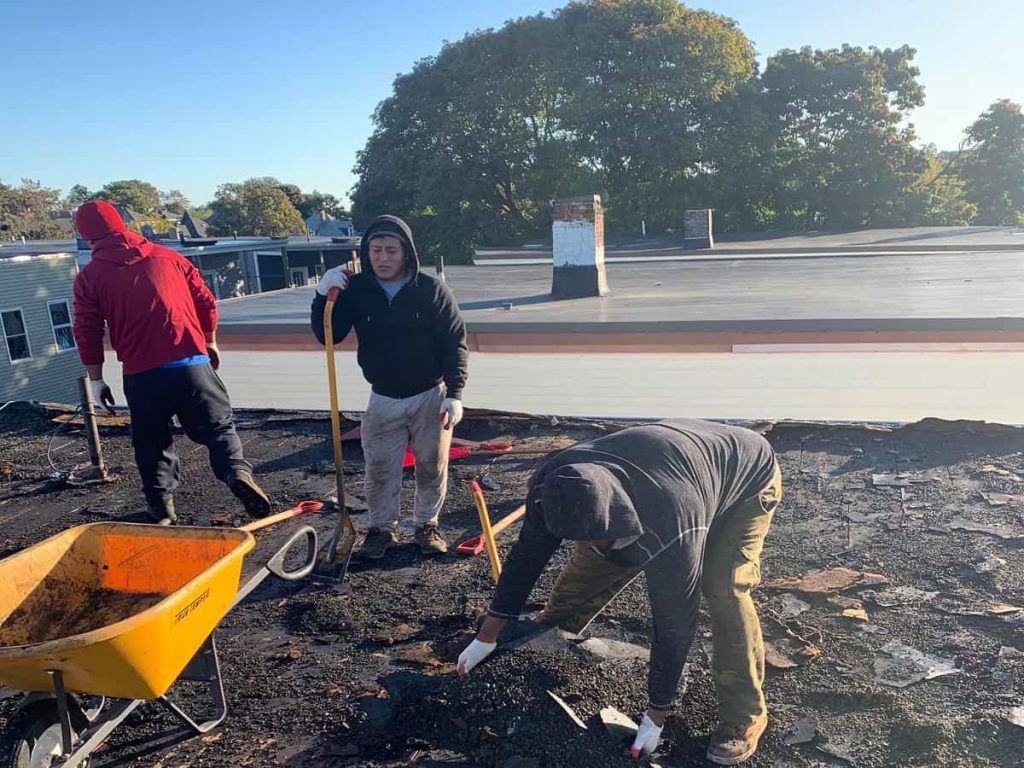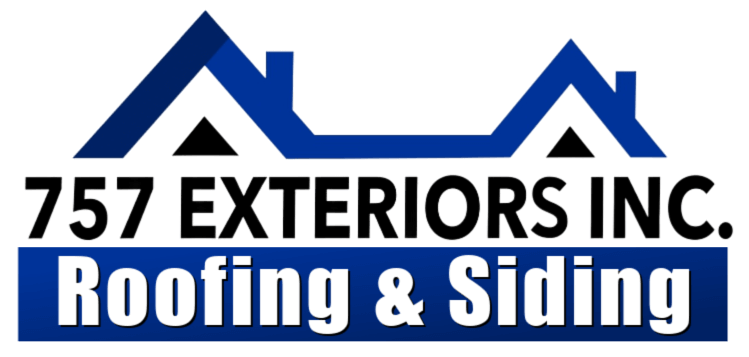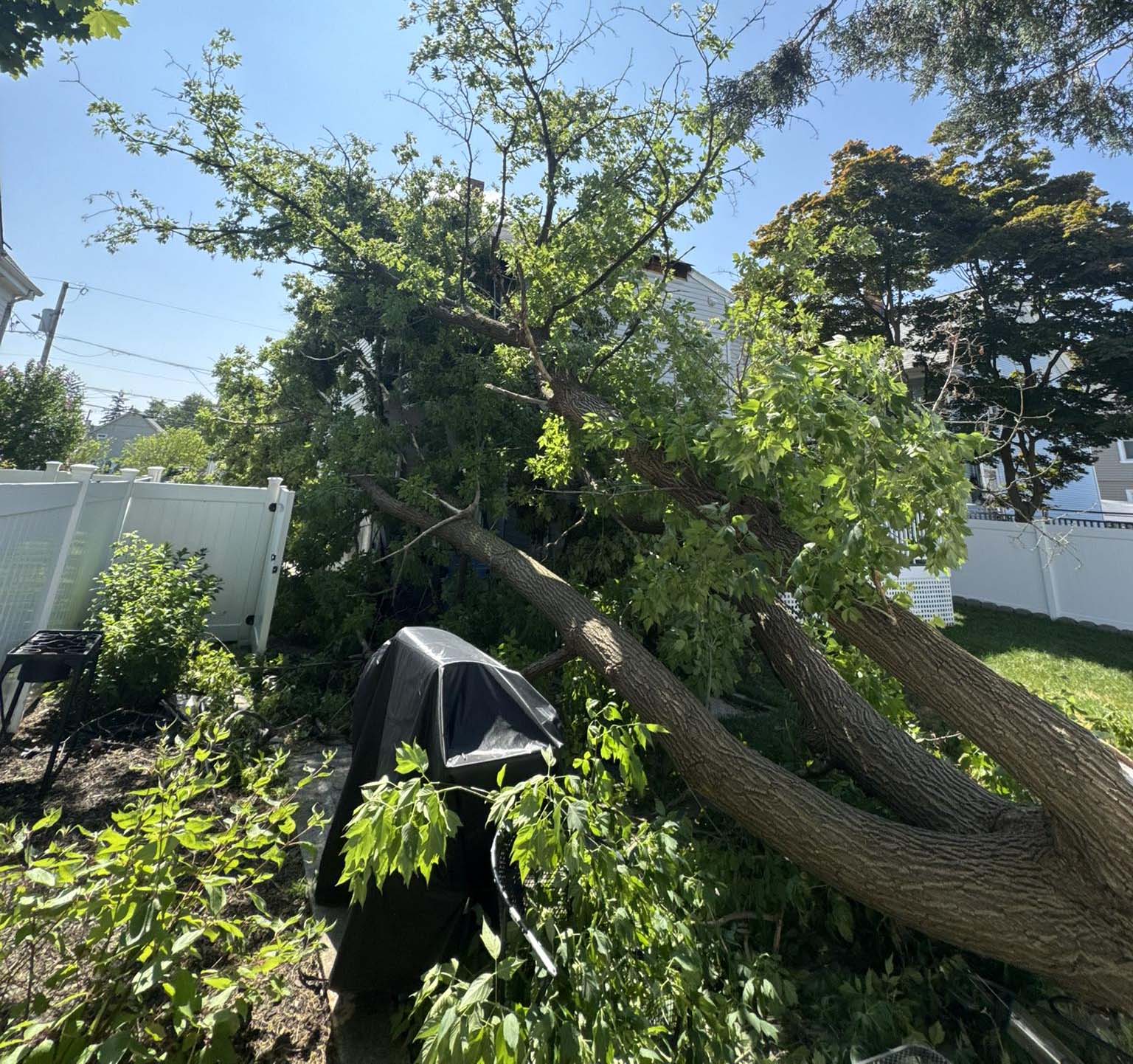Commercial roof storm damage represents one of the most significant threats to business operations and property value. When severe weather strikes, the consequences can extend far beyond visible damage, affecting everything from inventory and equipment to employee safety and business continuity. Understanding how to quickly identify, assess, and address commercial roof storm damage is crucial for minimizing both immediate risks and long-term financial impacts.
Professional assessment and prompt action are essential when dealing with storm-damaged commercial roofing systems. 757 Exteriors INC specializes in comprehensive commercial roofing services throughout Cranston, RI, offering expert storm damage assessment, emergency repairs, and complete restoration solutions. Their experienced team understands the unique challenges that commercial properties face after severe weather events, providing both immediate emergency response and long-term restoration planning.
Identifying Commercial Roof Storm Damage: Critical Warning Signs
Storm damage to commercial roofing systems often presents itself in various forms, some obvious and others requiring professional expertise to detect. Immediate visual indicators include missing or damaged shingles, torn membrane sections, and debris accumulation. However, subtle signs like minor leaks, sagging areas, or compromised flashing can indicate more serious structural issues.
Exterior damage indicators include:
- Missing, cracked, or displaced roofing materials
- Damaged gutters, downspouts, or drainage systems
- Punctures from hail or flying debris
- Lifted or torn membrane edges on flat roofs
- Compromised flashing around HVAC units and penetrations
Interior warning signs often appear hours or days after the storm passes. Water stains on ceilings, musty odors, or visible mold growth indicate water infiltration that requires immediate attention. Even minor leaks can lead to extensive damage if left unaddressed, affecting insulation, structural elements, and business operations.
Professional roofing inspection services become invaluable for detecting hidden damage that untrained eyes might miss. Advanced inspection techniques, including thermal imaging and moisture detection, can identify compromised areas before they develop into costly problems.
Expert Tip: The 24-Hour Rule
Document all visible damage within 24 hours of the storm for insurance purposes. Take detailed photographs from multiple angles and create a written inventory of damaged areas. This documentation becomes crucial for insurance claims and helps contractors provide accurate repair estimates.
Emergency Response and Temporary Protection Measures
When commercial roof storm damage occurs, immediate action prevents minor issues from becoming major disasters. The first priority involves ensuring employee and customer safety by identifying and cordoning off areas where debris might fall or structural integrity appears compromised.
Temporary protection measures can minimize additional damage while permanent repairs are planned. Tarping damaged sections, removing standing water, and securing loose materials help protect the building’s interior and contents. However, climbing onto damaged commercial roofs presents serious safety risks that require professional expertise and proper equipment.
Immediate emergency steps include:
- Evacuating affected areas if structural damage is suspected
- Contacting professional contractors for emergency assessment
- Documenting damage for insurance claims
- Removing standing water to prevent additional damage
- Securing loose debris that could cause further harm
Professional emergency services provide both immediate protection and long-term planning advantages. Experienced contractors can quickly assess damage severity, implement temporary solutions, and begin developing comprehensive restoration plans that minimize business disruption.
For businesses requiring immediate commercial roofing services, professional contractors offer 24/7 emergency response capabilities that can prevent minor damage from escalating into major structural problems.

Professional Commercial Roof Inspection After Storm Damage
Understanding Different Types of Storm Damage
Commercial roofing systems face various storm-related threats, each requiring specific assessment and repair approaches. Understanding these different damage types helps property managers make informed decisions about repairs and prevention strategies.
| Storm Type | Common Damage | Typical Repair Time | Urgency Level |
|---|---|---|---|
| Hail Damage | Granule loss, punctures, cracked membranes | 1-3 weeks | High – Hidden damage spreads |
| Wind Damage | Lifted shingles, membrane tears, debris impact | 1-2 weeks | Critical – Immediate water exposure |
| Heavy Rain | Leaks, ponding, drainage issues | 3-5 days | Moderate – Gradual deterioration |
| Snow/Ice | Ice dams, structural stress, membrane damage | 2-4 weeks | High – Structural integrity risk |
Hail damage often creates the most complex assessment challenges because impact damage may not become apparent until weathering exposes compromised areas. Professional inspection using specialized equipment can detect granule loss and membrane weakening that might not be visible during initial assessments.
Wind damage typically affects roofing systems through uplift forces that can compromise attachment points and create vulnerabilities for future storms. Even minor wind damage can compromise the entire system’s integrity if not properly addressed through professional roofing repair services.
Cost Analysis and Insurance Considerations
Commercial roof storm damage costs vary significantly based on damage extent, roofing material type, and repair complexity. Understanding these cost factors helps business owners make informed decisions about repairs, replacements, and insurance claims.
Factors affecting repair costs include:
- Building size and roof accessibility
- Damage severity and affected area percentage
- Roofing material type and availability
- Structural repairs required beyond roofing
- Local labor costs and permit requirements
Insurance coverage for commercial roof storm damage typically depends on policy specifics, damage cause, and maintenance history. Well-maintained roofs with documented inspection records generally receive more favorable claim treatment than neglected systems. Professional assessment and documentation significantly improve claim success rates.
Working with experienced contractors familiar with insurance processes can streamline claims and ensure appropriate coverage. Many professional roofing companies assist with insurance communications, providing detailed damage assessments and repair estimates that support claim approvals.
Most insurance policies require prompt notification of storm damage, making immediate professional assessment crucial for claim success. Delays in reporting or inadequate documentation can result in claim denials or reduced settlements.
For comprehensive roofing replacement services when damage is extensive, professional contractors can provide detailed cost analyses that help property owners understand their options and make informed decisions about repair versus replacement.
Prevention Strategies and Maintenance Best Practices
Proactive maintenance and prevention strategies significantly reduce commercial roof storm damage risks and associated costs. Regular inspections, prompt minor repairs, and proper drainage maintenance create resilient roofing systems better equipped to withstand severe weather events.
Essential prevention measures include:
- Bi-annual professional roof inspections
- Regular gutter and drainage system cleaning
- Prompt repair of minor damage before storm seasons
- Tree trimming to reduce debris and impact risks
- HVAC system maintenance to prevent roof penetration issues
Seasonal preparation protocols help businesses prepare for anticipated weather challenges. Pre-storm inspections, secure loose equipment, and emergency response planning minimize damage potential and improve post-storm recovery times.
Documentation of maintenance activities and repairs creates valuable records for insurance purposes and helps contractors understand system history when planning repairs or replacements. Comprehensive maintenance records often result in better insurance coverage and reduced claim processing times.
Professional maintenance programs offer systematic approaches to roof care that extend system life and reduce storm damage vulnerability. These programs typically include regular inspections, preventive repairs, and emergency response services that provide comprehensive protection.
Storm Damage Prevention Checklist
Monthly Tasks
Visual inspections, debris removal, drainage checks
Seasonal Tasks
Professional inspections, sealant renewal, equipment servicing
Annual Tasks
Comprehensive assessments, system upgrades, warranty reviews
Choosing Professional Restoration Services
Selecting qualified contractors for commercial roof storm damage restoration requires careful evaluation of experience, credentials, and service capabilities. The complexity of commercial roofing systems demands specialized expertise that goes beyond basic residential repair skills.
Key contractor selection criteria include:
- Commercial roofing experience and certifications
- Insurance and bonding verification
- References from similar commercial projects
- Emergency response capabilities and availability
- Comprehensive service offerings including assessment and restoration
Licensed professionals provide warranties on work performed and carry insurance that protects property owners from liability during repair processes. These protections become particularly important for complex commercial projects that may involve multiple contractors and extended timelines.
Experience with insurance claims processes can significantly impact project success and cost management. Contractors familiar with documentation requirements, claim procedures, and insurance company expectations help streamline approvals and ensure appropriate coverage.
For businesses seeking reliable residential roofing services alongside commercial expertise, contractors offering comprehensive solutions provide valuable continuity and relationship benefits.
Frequently Asked Questions
Q: How quickly should I address commercial roof storm damage?
A: Commercial roof storm damage requires immediate attention, ideally within 24-48 hours. Prompt response prevents minor damage from escalating and supports insurance claim requirements. Emergency temporary protection should be implemented immediately, followed by professional assessment and permanent repairs.
Q: Will my insurance cover commercial roof storm damage repairs?
A: Coverage depends on your specific policy, damage cause, and maintenance history. Most commercial policies cover storm damage when roofs are properly maintained. Professional documentation and prompt reporting improve claim approval chances significantly.
Q: Can I perform temporary repairs myself while waiting for professional services?
A: Basic safety measures like removing standing water and securing loose debris are appropriate, but climbing onto damaged commercial roofs presents serious safety risks. Professional contractors have proper equipment and expertise for safe temporary repairs and permanent restoration.
Q: How do I prevent future commercial roof storm damage?
A: Regular professional inspections, prompt minor repairs, proper drainage maintenance, and seasonal preparation significantly reduce storm damage risks. Comprehensive maintenance programs provide systematic protection and extend roof system life.
Protect Your Commercial Property Today
Don’t let commercial roof storm damage compromise your business operations. Get professional assessment and restoration services from Cranston’s trusted roofing experts.
757 Exteriors INC
📞 Call: +1 401-583-6671
📍 Serving Cranston, RI and Surrounding Areas





